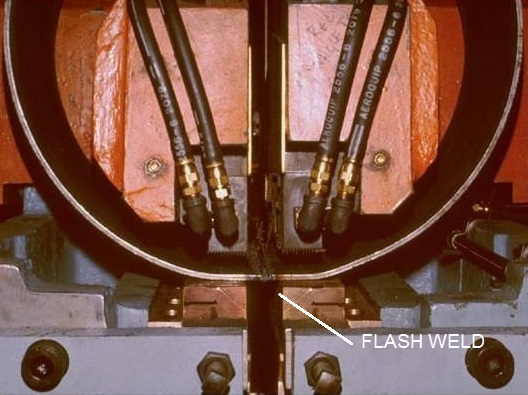The affect of flash and butt welding on the electrical circuit of the machine and plant facility depend upon the size of the job being welded. Nominally flash/butt welders use power similarly to a spot welder. A band saw butt welder does not draw much power. A butt welder in a wire draw shop could be relatively small.
A flash welder for off-road vehicle wheels or large trucks requires considerable power. Butt or flash welding railroad rails together would require considerable power.
The smaller jobs would have no more affect than a resistance spot welder. The larger butt or flash welders to do RR rails would require a substantial dedicated buss. There would be potential for large draw on the buss if not sized properly.

Traditionally this would have been AC equipment. The smaller jobs can work well with AC. The larger jobs are probably flash welds and can work with AC but could prove to be a large draw on a plants power supply with big spikes, since the draw is not across all three phases.
MFDC is a much better solution. MFDC does a better job overall handling power requirements of flash/butt welding. MFDC advantages are:
- balanced three phases
- continuous heating
- no zero cross over
- less power required
- buss size is reduced
- much better control
- better quality results
For new installations MFDC is the way to go. It should be considered when upgrading existing installations.
For additional reading in this BLOG:
ARE 1000 hz MID FREQUENCY MFDC CONTROLS USED FOR HOT UPSETTING BUTT OR FLASH WELDING?
Reference: RWMA – Resistance Welding Manual 4th Edition

